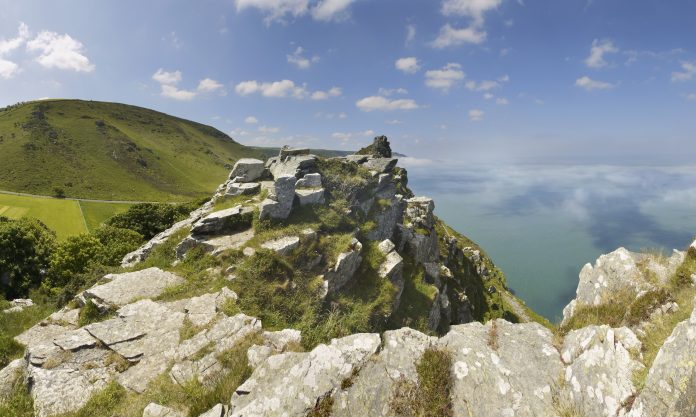New research challenges the idea that natural rock weathering acts as a carbon sink that removes CO2 from the atmosphere
The University of Oxford recently conducted a study that challenges the belief that natural rock weathering’s acts as a carbon dioxide (CO2) sink.
Instead, the research suggests it can serve as a significant CO2 source, potentially on par with volcanic emissions. These findings, published in the journal Nature, significantly affect how we model and understand climate change scenarios.
Natural carbon release from rock weathering
Rocks contain an enormous store of carbon in the ancient remains of plants and animals that lived millions of years ago. This store, often called the “geological carbon cycle,” is a natural thermostat regulating the Earth’s temperature. Rocks can absorb carbon dioxide (CO2) during chemical weathering when specific minerals react with the mild acidity in rainwater. This mechanism counterbalances the continuous CO2 emissions from volcanoes worldwide and is an integral component of Earth’s innate carbon cycle. This natural process has been vital in maintaining a habitable environment for life on our planet for over a billion years.
For the first time, this recent study quantified an additional natural process responsible for releasing carbon dioxide (CO2) from rocks into the atmosphere. It revealed that this process is on par in terms of significance with the CO2 emissions from volcanoes worldwide.
Surprising CO2 source
This process happens when rocks, originally formed on ancient sea-floors where plant and animal remains were buried in sediments, resurface due to events like mountain formation (the Himalayas or Andes).
When these rocks reemerge, they expose the organic carbon within them to oxygen in the air and water, leading to reactions that release carbon dioxide (CO2). This means that weathering rocks can be a source of CO2, contrary to previously thought, where they were considered a CO2 sink.
Measuring CO2 Release
Measuring the release of CO2 from the weathering of organic carbon in rocks has been a challenge. In the new study, researchers used a tracer element, rhenium, released into water when organic carbon in rocks reacts with oxygen. By sampling river water to measure rhenium levels, they could quantify the CO2 release.
The researchers took two key steps to extend their findings across the Earth’s surface. First, they calculated the amount of organic carbon in rocks near the surface. Second, they determined the regions where these rocks were experiencing the most rapid exposure due to erosion, particularly in steep mountainous areas.
Dr Jesse Zondervan, the researcher who led the study at the Department of Earth Sciences, University of Oxford, said: “The challenge was then how to combine these global maps with the river data, while considering uncertainties. We fed all of our data into a supercomputer at Oxford, simulating the complex interplay of physical, chemical, and hydrological processes. By piecing together this vast planetary jigsaw, we could finally estimate the total carbon dioxide emitted as these rocks weather and exhale their ancient carbon into the air.”
This comparison allowed them to assess the potential CO2 reduction achieved through the natural rock weathering of silicate minerals. The findings highlighted numerous significant regions where weathering acted as a source of CO2, challenging the understanding of weathering’s role in the carbon cycle.
Regional hotspots of CO2 emissions
Areas with concentrated CO2 release were primarily located in mountain ranges experiencing high uplift rates, leading to the exposure of sedimentary rocks. The global CO2 release resulting from the weathering of rock organic carbon was estimated at 68 megatons of carbon annually.
Professor Robert Hilton (Department of Earth Sciences, University of Oxford), who leads the ROC-CO2 research project that funded the study, said: “This is about 100 times less than present day human CO2 emissions by burning fossil fuels, but it is similar to how much CO2 is released by volcanoes around the world, meaning it is a key player in Earth’s natural carbon cycle.”
These carbon dioxide (CO2) emissions from weathering processes may have fluctuated throughout Earth’s history. For instance, during periods of mountain formation when numerous rocks rich in organic material were uplifted, the release of CO2 could have been more substantial, potentially impacting the planet’s climate in the past.
Current and future research
Current and future research is delving into how alterations in erosion resulting from human activities and the heightened warming of rocks due to human-induced climate changes might exacerbate this natural carbon release. The research team addresses one of the key inquiries: whether this natural CO2 release will escalate in the next century.
Although the carbon dioxide released from rock weathering is relatively minor compared to the current levels of human-generated emissions, a more comprehensive grasp of these natural processes will enhance the ability to forecast and manage our overall carbon budget.











